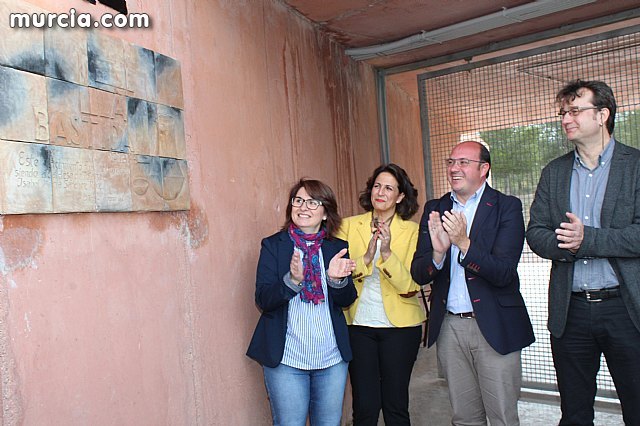The Minister of Education, Culture and Universities, Pedro Antonio Sánchez, said today at the official opening to visitors and experts Reservoir Argárico La Bastida that "took the recovery of our heritage, research and advocacy to create more jobs in the region" .
With Secretary of State for Tourism, Isabel Borrego, and the Mayor of Totana, Isabel Maria Sanchez, the Minister of Culture visited this space, listed as one of the most important prehistoric sites in Europe.
La Bastida was the first archaeological site excavated in the Bronze Age and is currently the most scientific relevance and equity screens in Europe, has unveiled the company Argar, which ran between 2200 and 1500 BC.
Excavations in the spring-summer of 2012 at the archaeological site of La Bastida brought to light an imposing fortification system unique in his time.
The finding confirms, along with the other discoveries made in recent years, the city was the site most developed in Europe in political and military terms during the Bronze Age (4200 years ago 2200 BC) matched only by the Minoan civilization Crete.
"These features make the site of La Bastida de Totana a great resource in the Region of Murcia for its great cultural, archaeological importance and, of course, tourism. For this reason, between administrations have made a significant effort for consolidation, musealization and openness to the visit of professionals and the general public, which will generate and boost the economy based on their heritage and cultural resources municipality, "said Pedro Antonio Sánchez.
A didactic preparation of individual homes, streets and walls, the visitor center of La Bastida, which also has a leading research center in the treatment of archaeological objects adds.
In total, the different administrations have done in recent years an investment of 3.5 million euros to bring out and show this important archaeological site of the Bronze Age.
Also, the scientific, technological and heritage project has attracted the support of many institutions, among which the British Museum (UK), the Louvre (France) and the Universities of Cambridge (UK), Tübingen, Mannheim, Kiel (Germany), Innsbruck (Austria) or Barcelona, ​​Lleida and Murcia.
La Bastida
The site of La Bastida occupies a steep hill almost four hectares in the foothills of the Sierra de la Tercia.
It was declared of Cultural Interest in the special significance of the site and the need to protect its important historical and archaeological value in 2005.
This town experienced its heyday around 1550 BC, when it occupied an area of ​​40,000 square meters and consisted of houses surrounding the hill that housed a population of between 800 and 1000 inhabitants.


